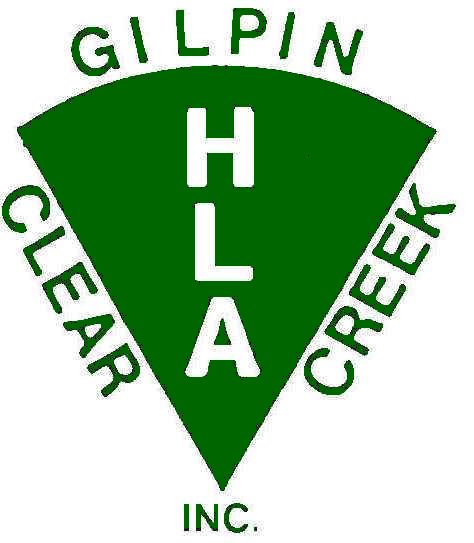 HOME |
Gilpin - Clear Creek Home & Landowners Association, Inc. P.O. Box 237 - Idaho Springs, CO 80452 www.YorkGulch.com |
Articles |
| Introduction |
| Personal Wildfire Protection Plan |
| Pine Beetle Mitigation |
Proposals |
| 2012-02-26 Section Boss Proposal |
Mountain Pine Beetles:
Prevention & Treatment
Year
#5 of the 7?-year cycle occurs in 2002. In Spring Gulch (aka Batalle
Gulch) 2001 wasn't as bad as the previous years, because Otto VanGeet,
Laurie Beckel, Bob Musemechi, Todd & Amina Morrison, Larry Kramer,
Don DeVore, Craig Wandrey, Marci, and I removed and treated about 20
infected trees before the beasties flew each Aug. We failed to get a
couple last year; we'll know in a few months how much damage was done.
Let's compute. Each infected tree infects 4-5 more the following year:
| 1999: 2000: 2001: 2002: |
9 X 4 = 36 trees saved in 2000; 35 saved + 10 more treated X 4 = 180 trees saved in 2001; 180 + 4 more treated X 4 = 700+ saved in 2002; 700 X ?? treated = > 3000 trees saved in 2003. |
We should do four things before late July of each year:
- Remove trees felled and treated last year.
- Find and mark trees infected last year (for removal this year).
- Fell and treat those trees.
- Spray preventively (to minimize the damage next year).
Let's look at each task.
Remove Treated TreesAnything you sprayed and wrapped last year, can be removed at any time. If you are treating them with sunlight rather than spraying (ecologically preferred, but not as effective), don't remove them until summer, but turn them in Jan and May. Each time, uncover, rotate the logs 120 degrees, re-wrap them. Then remove them no earlier than late July. [Note: Remember which way you turned them in Jan., so you continue (not reverse) the process in May.]
Find & Mark Infected Trees
Keep an eye out for suspicious trees. You can look for the tell-tale "popcorns" now; the needles should turn rusty-then-dull brown starting in late spring. Keep an eye out for suspicious trees; Marci and I carry surveyor's tape in car and fanny pack in order to mark them. Do this early, so I can plead our case with USFS.
Fell & Treat Infected Trees
Do this no later than early August. (We were able to push the envelope last year because it was cool and wet; even so, we were late on a couple trees.) Take the following steps:
- Be sure the tree really is infected and that the infection is current:
- Popcorns alone are not conclusive (they may be old, or the tree could have spit the beasties out).
- Blue wood (the beetle-introduced fungus that actually killed the tree) is a better guide -- but it, too, could be from a previous year.
- Needles that have gradually browned during Spring and Summer are even more persuasive -- but we found three trees last year that died from other causes during the same time period.
- Absolutely conclusive are the grubs; look under the bark near the entry popcorn. They are the offspring of the beetles that killed that tree; and when they fly in August, they will infect several more.
- Cut the tree down. Section it to preference (5-6 foot lengths are the easiest to treat and wrap; only other consideration is size of fireplace). Only the first 12 feet of trunk and branches larger than 5-6 inches in diameter need to be treated in steps 3-5.
- (Optional) Spray the outside of the infected portions thoroughly if you want beetle protection over ecology. Lindane is the best, but it won't be available much longer. If you skip this step, take extra precautions at steps #4 & 5.
- Whether or not you spray, wrap the infected portions securely to withstand the wind. Use clear, 6 mil plastic and high-quality duct tape. If you didn't spray, debark, wrap to withstand a year of YG wind, rain, and snow, and choose a sunny spot.
- Let wrapped tree remain until at least October if sprayed, until next August if the sunlight method is used. If not sprayed, unwrap, turn logs 120o, and rewrap in Dec/Jan and again in May. If you remembered which way you turned the logs in Jan, the May rotation gets all portions of the trunk exposed to the UV of the sun.
Spray Preventively
This works; our homesite is directly downwind of the infected tree we didn't get out in time in 1999, and everything we sprayed, we saved, even though two had been stressed by an excavator with a heavy hand. (We lost other trees in the path of the infected one, but none of the ones we chose to save.) Give preference to trees that are important to you, particularly ones that have been stressed.
The spray (Sevin) is supposed to be effective for several months, but there's no reason to field test that claim. Wait until summer, but be sure to have the job done before the insects swarm in early August. Spray 12 feet up the trunk and any branches larger than 4-6 inches in diameter.
A good source of information is the State Forest Service page on CSU's Website (http://www.colostate.edu/Depts/CSFS/mpb2.pdf) -- but you'll need the Acrobat Viewer to access it. Click here to download the viewer from Adobe's site.
Bill Sanders
|
© 1999-2017 by Gilpin-Clear Creek Home and Landowners Association
All rights reserved. |
| Contact: -- PHP Version: 8.2.17 |